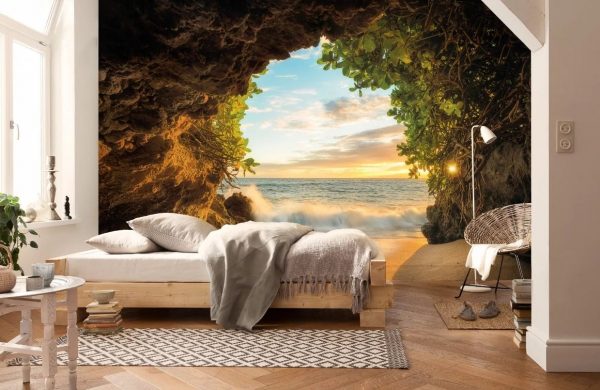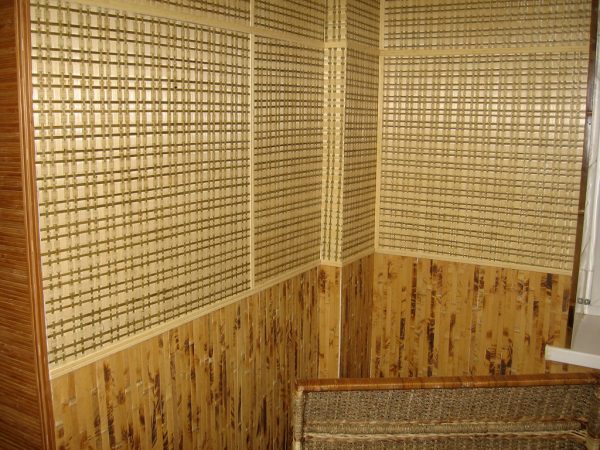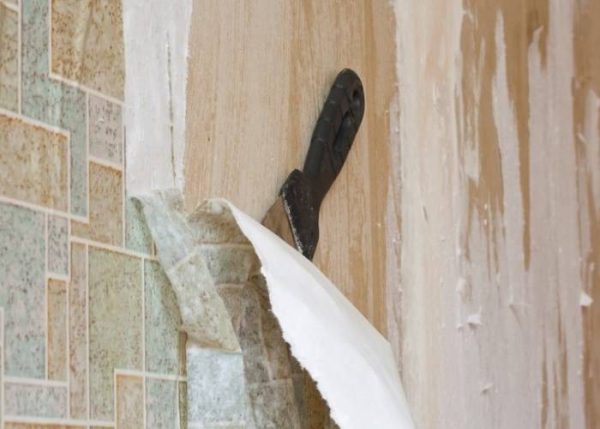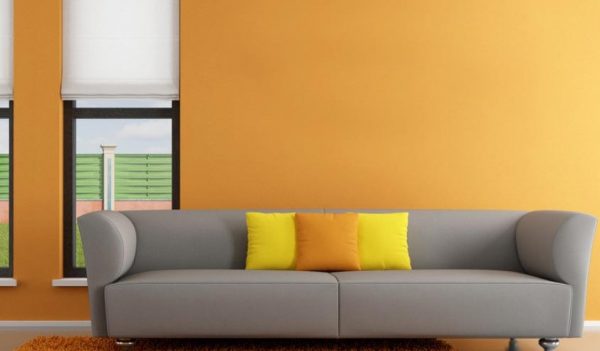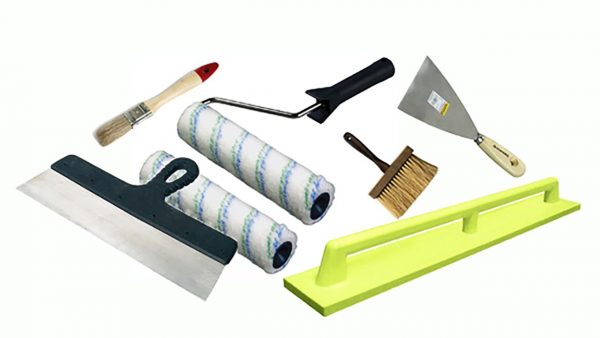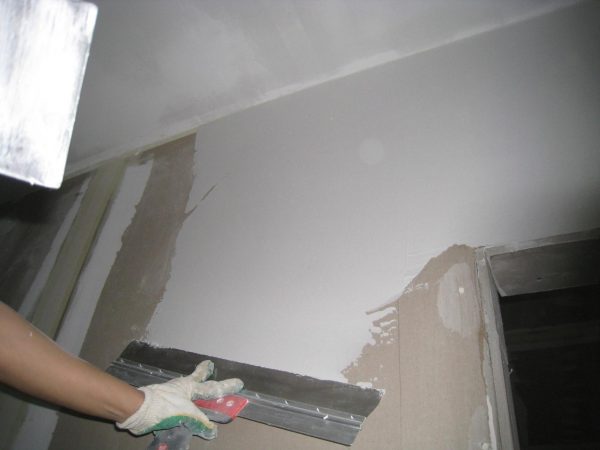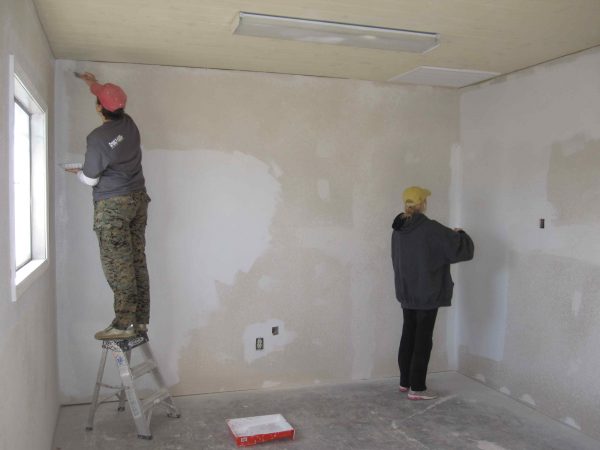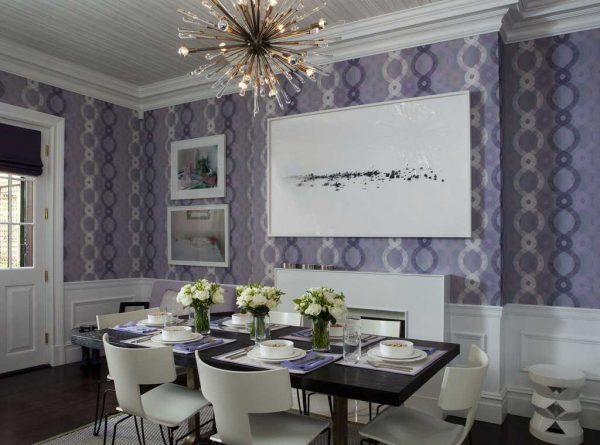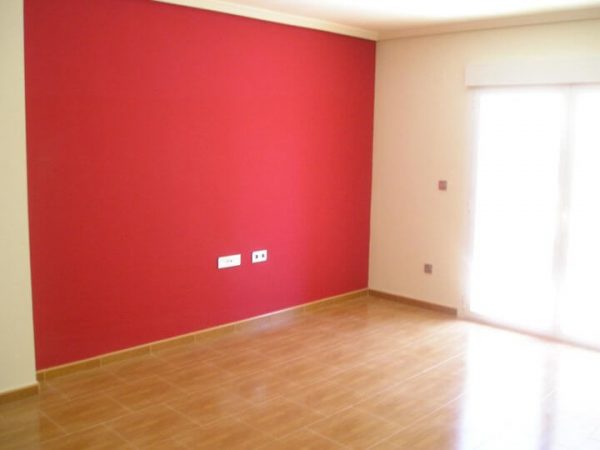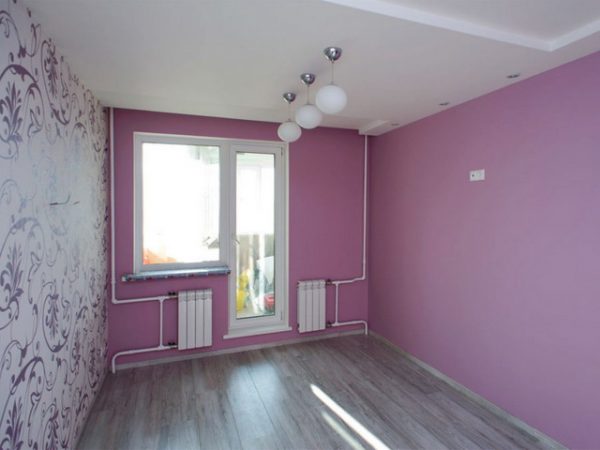When planning repairs in the house, the apartment you need to immediately determine the type of wall decoration, because it plays a decisive role in the interior. Some prefer to paint the walls, others - to glue wallpaper. Which is better, wallpaper or wall painting? Each type of finishing work has its own advantages and disadvantages, so you have to choose individually.
- Types, advantages and disadvantages of wallpapering
- Varieties of colors, the pros and cons of painting walls
- Comparison of criteria
- Cost of materials
- Surface cost calculation
- Before staining
- Before wallpapering
- Do you need thorough preparation
- Complexity of work
- Environmental friendliness
- Practicality
- Aesthetics
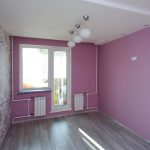
Types, advantages and disadvantages of wallpapering
Beautiful wallpaper in the living room, bedroom, not only look expensive and stylish, they give the room a special cosiness, warmth. Photowall-paper and at all serve as the main element of a room decor, its "highlight". Thick wallpaper canvases act as a way of heat and sound insulation of the room.
For wall decoration, they often choose ordinary paper wallpapers - they are the cheapest, they are glued with any wallpaper glue, and are environmentally friendly. Paper-based canvases can be thin or “triplex” - triple with a layer of wood in the middle. Also, 100%, you can be sure of the safety of glass (fiberglass). They contain fiberglass and other harmless components. Typically, cullets are white and are used for subsequent painting. They are ideal for offices and wet rooms.
The following types of wallpaper are much more expensive:
- vinyl;
- tissue;
- non-woven;
- bamboo;
- silk;
- with acrylic spraying;
- decorative plaster (liquid wallpaper).
Wallpaper can be smooth and embossed, embossed and even textured - for example, in the form of brickwork. The choice of paintings is very rich, while the advantages of using this type of finishing material are undeniable:
- preparation is carried out to a minimum, since small wall defects will hide perfectly with thick canvases;
- Wallpaper perfectly adheres to most types of substrates, even with bare concrete, provided that special glue is used;
- the shades and textures of the wallpaper are incredibly diverse, the surface is soft, delicate, giving the interior "visual warmth";
- wallpaper is practically not able to cause allergies (we are talking about paper, non-woven materials), modern paintings are safe for humans;
- the finishing layer will enhance the effect of isolation from noise, reduce heat loss in corner apartments;
- paper wallpaper is a vapor-permeable material, they do not violate the indoor microclimate;
- even a layman can glue new wallpaper, the method is simple and affordable - you just need to learn how to combine the pattern and smooth the paintings on the wall;
- Wallpaper life is long, many can be washed with household cleaning products.
There are also disadvantages to this type of finish:
- in order to tear off the strongly glued canvases from the wall, you need to try - first you will have to moisten them with water, then - scrape off with a spatula (usually problems arise when replacing paper wallpapers, thick ones are easier to remove);
- dirt, stains from paper strips are difficult to remove, abrasion may remain on the surface (washable wallpapers easily tolerate such manipulations);
- animals often spoil the wallpaper, tear it off, so if you have a pet you need to buy a roll of material in reserve;
- Wallpaper made of paper is not suitable for rooms with high humidity - bathroom, kitchen, they may come off or lose their appearance;
- under the influence of mechanical factors, the material easily breaks, and thin paper wallpaper can be deformed even with a fingernail.
Varieties of colors, the pros and cons of painting walls
Paint is an alternative to wallpapering; it can be chosen instead of traditional wall pasting. When choosing a paint and varnish product, it is necessary to take into account the function of the room in which the repair is supposed. The materials may be:
- acrylic and latex - used in rooms with high humidity, give a very beautiful, silky finish (matte or glossy);
- water-based (based on PVA) - suitable only for dry rooms, when in contact with water and steam lose their properties and beautiful appearance;
- silicone - used by allergy sufferers, since they 100% exclude the appearance of a reaction, but are expensive in cost.
Oil paints, acrylates and nitro enamels for walls are practically not used. They contain many harmful substances, because in recent years they have been replaced by more modern compounds.
The advantages of painting walls in a room are as follows:
- surface preparation necessarily includes priming with antiseptics, which significantly “heals” the room;
- in the presence of spots, small defects, you can easily carry out local repairs - this will not lead to large costs;
- painted walls can be washed, their appearance will not be affected, paint can easily wash away dirt, traces of markers, food debris, stains from drinks;
- animals do not tear painted walls, do not sharpen claws about them;
- the colors of the paints are diverse, you can order tinting at any hardware store in any, even the rarest, shade.
Disadvantages of painting are also available. Preparing the walls is always laborious, because otherwise even the smallest defects will be perfectly noticeable. If a layman is involved, the result may not be good enough. It is also difficult to carry out the initial painting, as opposed to a small coating update. It is better to learn the application technique so that ugly strokes are not visible on the wall. Matte coatings have another drawback - their pores are clogged with dust that penetrates from the air, so you will need to wash the walls regularly.
to contents ↑The most spectacular paints are expensive, and repairs will cost a decent amount. Very laborious will be the work of applying stencils, textured drawings. If you leave the walls monophonic, for an apartment this may seem boring, although for an office it is ideal.
Comparison of criteria
Painting walls or wallpapering is a matter of taste. To choose an option, you need to compare all the parameters, choosing for yourself a solution that is suitable for price and labor costs.
Cost of materials
Such a comparison is correct only when considering materials of similar quality. So, there are very expensive wallpapers (for example, from natural fabric, bamboo) and no less expensive paints (when calculating per square meter of area). Budget options for emulsion paper and paper wallpaper will be approximately the same in price. If you compare high-quality latex paint and non-woven wallpaper, the cost of work will also be approximately the same.
At the cost of additional tools, staining loses. You will need to buy a roller, brush, paint tray, paint container, and also pay for tinting. For gluing wallpapers you need only an ordinary bucket, glue and a roller.
to contents ↑Surface cost calculation
All wall decoration work begins with surface preparation. This is often the largest and most expensive stage, which takes a lot of time and effort.
Before staining
If you decide to paint the walls of the living room or office, you can not do without preliminary preparation. In the absence of wall alignment, defects will be noticeable, which will ruin the quality of the repair. In addition, without preparation, the adhesion of the base will remain low, so cracks, dents or bulges will quickly appear on the walls.The main stages of preparing walls for painting:
- Dismantling the old coating. This stage is skipped only in new homes where the walls are concrete or have minimal thin plaster.
- Alignment of the walls. The use of putties (cement, gypsum and others) helps to get rid of cracks, pits and chips. Depending on the quality of the initial coating, sometimes it is necessary to make several layers of putty and apply reinforcing meshes.
- Finishing putty. Necessarily performed before subsequent staining, allows you to achieve a smooth surface with a snow-white color. Finishing is especially important for painting with light paints and varnishes.
- Grinding. This stage of work is needed to give the base a perfect evenness.
- Primer in 1-3 coats. The primer helps to reduce the absorption of the surface, improves the adhesion of the finish to the wall.
Plasterboard surface preparation is much faster. Here, only the seams (joints) of gypsum plaster sheets are putty, after which the material is primed 2 times. This will seriously reduce the cost of time and money.
to contents ↑Particular attention should be paid to preparing the walls in the bathroom and kitchen. Such rooms are subject to regular exposure to moisture, so wall materials often deteriorate. In such rooms, you should only use special moisture-resistant antiseptic primers, putties, which are much more expensive.
Before wallpapering
The cost of preparing the walls for subsequent wallpapering can vary greatly depending on the initial smoothness of the walls and the type of canvas. If the walls are even, and the wallpaper is thick, embossed, it will be enough only to dismantle the old coating and priming the walls. Such training is quick, not expensive, it is easy to do it yourself.
The standard version is the most common. It includes dismantling, putting putty in one layer to seal cracks, holes and chips of the existing plaster. After the wall is primed. The option "from scratch" is used in the presence of bare concrete walls or a very uneven surface with many defects. Walls have to be completely cleaned of the coating, the surface must be primed 2 times, then putty, sand and primer again. The cost of such preparation is approximately the same as the price of preliminary measures before staining.
to contents ↑Do you need thorough preparation
In general, preparing walls for wallpaper is much easier than for painting. In the first case, minor defects do not matter much, they are covered with dense canvases. Even more serious differences will not be evident. Before staining, the thoroughness of the preparation is of utmost importance. All defects will be in full view, so to seal them you need to use gypsum and acrylic putty, followed by priming.
to contents ↑Complexity of work
Difficulties in wallpapering can arise only when buying a low-quality material, which, after the glue dries, will shrink or deform when applied to the wall. It is also somewhat more difficult to work with color wallpaper with a pattern or original details - they must be combined correctly. In addition, the consumption of paintings will be large.
Staining also has its own difficulties: inaccurate smears, slow work can lead to a negative result - the appearance of spots, streaks. When finishing putty, the slightest scratch will also sharply reduce the quality of the coating, which will greatly complicate the repair.
to contents ↑
Environmental friendliness
Wallpaper made from natural materials - glass, wood, paper, fabric can boast of ecological cleanliness. Many of them, unfortunately, are impractical or have insufficient beauty and are used only in offices. Vinyl wallpapers for production include the use of formaldehyde.Despite the assurances of the manufacturers that the substance is released only with strong heating, an unpleasant odor will be present in the apartment for several months.
to contents ↑Wall paints are, for the most part, environmentally friendly. This applies to latex, acrylic, water-based materials. Only alkyd enamels are dangerous to the body, but they are hardly used for decoration of premises.
Practicality
The safest paper and textile wallpapers do not last long. They quickly get dirty, at the same time they are not subject to washing, they are not resistant to abrasion. During normal scratching, a hole may appear on the paper. Vinyl wallpaper, like glass, non-woven, lasts an order of magnitude longer, is easy to clean, any stains can be removed from them without losing any external gloss.
Paint gets dirty faster and stronger than durable wallpapers, but it’s much easier to wash painted walls. But we must remember that intense friction will lead to the highlighting of the site against the general background, so the wall will have to be tinted.
to contents ↑Aesthetics
After reviewing various design projects, we can conclude that the rooms have rooms with wallpaper and painted walls. Both types of finishing materials are presented in a wide assortment, colors and types. Nevertheless, for the bedroom, experts advise using wallpaper - they are more comfortable, provide a feeling of calm, peace. Paints are considered more boring, but they can be significantly enlivened by applying beautiful prints.
If you make a choice in favor of paint or wallpaper is hard, you can compromise - to perform both types of decoration in different rooms. There are also alternative options - liquid wallpaper, decorative plaster, panels or even wood trim. They will allow you to diversify the design of the room, completing it to your taste.

